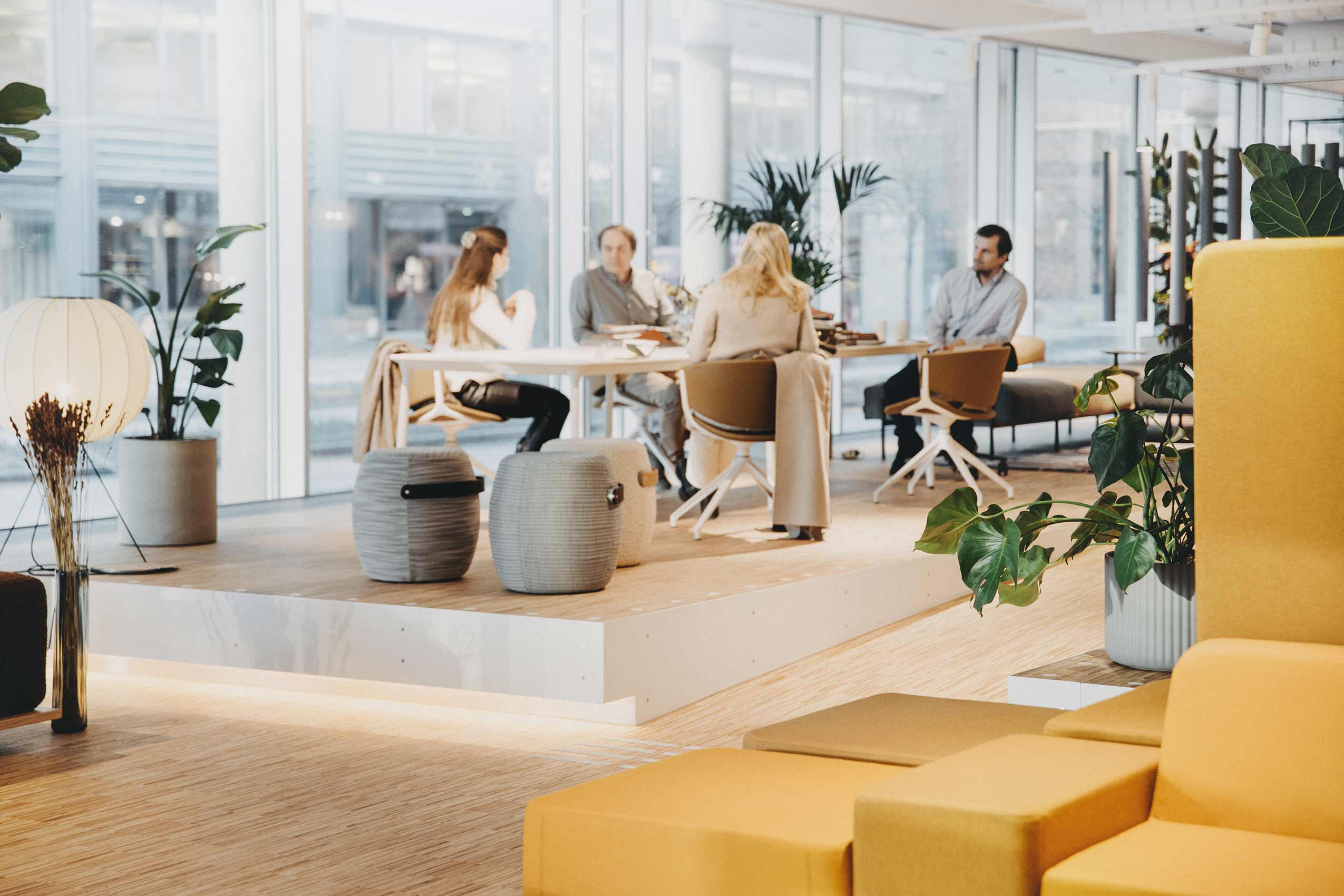
Workspace design to improve communication, connection and rebuild company culture
Exploring the effects of hybrid work on social connection in the workplace, and how approaching office design with this in mind can help businesses achieve greater social cohesion and overall wellbeing for all their employees.
- Design
- Wellbeing
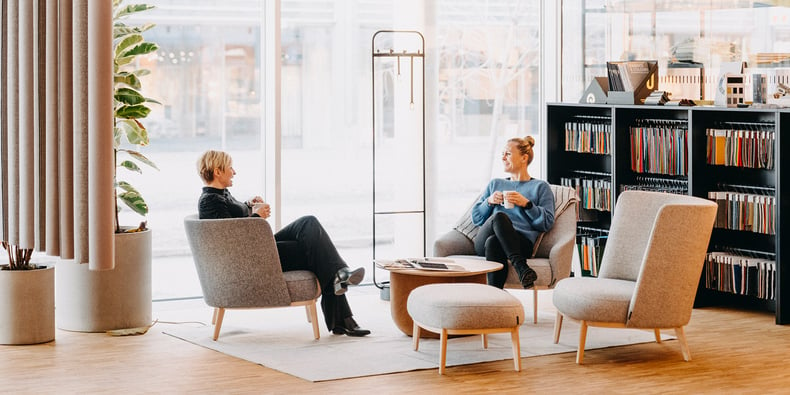
One of the biggest buzzwords of 2022 was “quiet quitting” – so much so, it was named one of Collins Dictionary’s words of the year. Whilst its general meaning of ‘to do only what is asked of you’ is not in itself particularly problematic (why should anyone be expected to do more than they are paid for?) one of the underlying reasons for its rise to prominence should make all employers sit up.
The rise of remote (and its evolution into hybrid) working has given employees a much higher degree of autonomy over their working day. This has been a positive, especially for younger generations. In fact, research by the London School of Economics found flexibility to be the most important factor when it comes to members of Gen Y & Z choosing where to work, even more important than salary.
Why Social Cohesion is important
This increased flexibility, however, has come at a cost – the erosion of company culture. One of the critical benefits of the office is to strengthen social cohesion, a term that translates to “business friendship” according to workplace strategy guru Andrew Mawson. With such a distributed workforce, people are generally spending less time together in the same room. Even with a hybrid-working model, whole teams or organisations are rarely in the office together.
Social cohesion is what helps businesses thrive. It is about people getting to know each other, creating relationships with fellow employees, and feeling invested in your work. It improves information sharing and boosts collaboration and creativity. Above all, it makes people feel valued, and that their work is meaningful.
Many recent studies show that this is a problem. The 2022 Microsoft Work Trend Index shows that 68% of business decision-makers say that ensuring cohesion and social connections within teams has been a moderate/major challenge due to the shift to hybrid work. And it’s not just management who are feeling this. The same study found that for employees, 51% said their relationships outside their immediate work group have weakened with 43% feeling disconnected from their company as a whole.
With this kind of information, it is clear that there is a lot to be gained by spending more time in the same building, and less time working remotely, but it’s not simply a case of forcing people back in. The genie is out of the bottle, and many are willing to sacrifice the drop in social cohesion for the benefits of a more flexible work life. One final statistic from the Microsoft Trend Index is that 76% of employees say they need a better reason to go in than just company expectations.
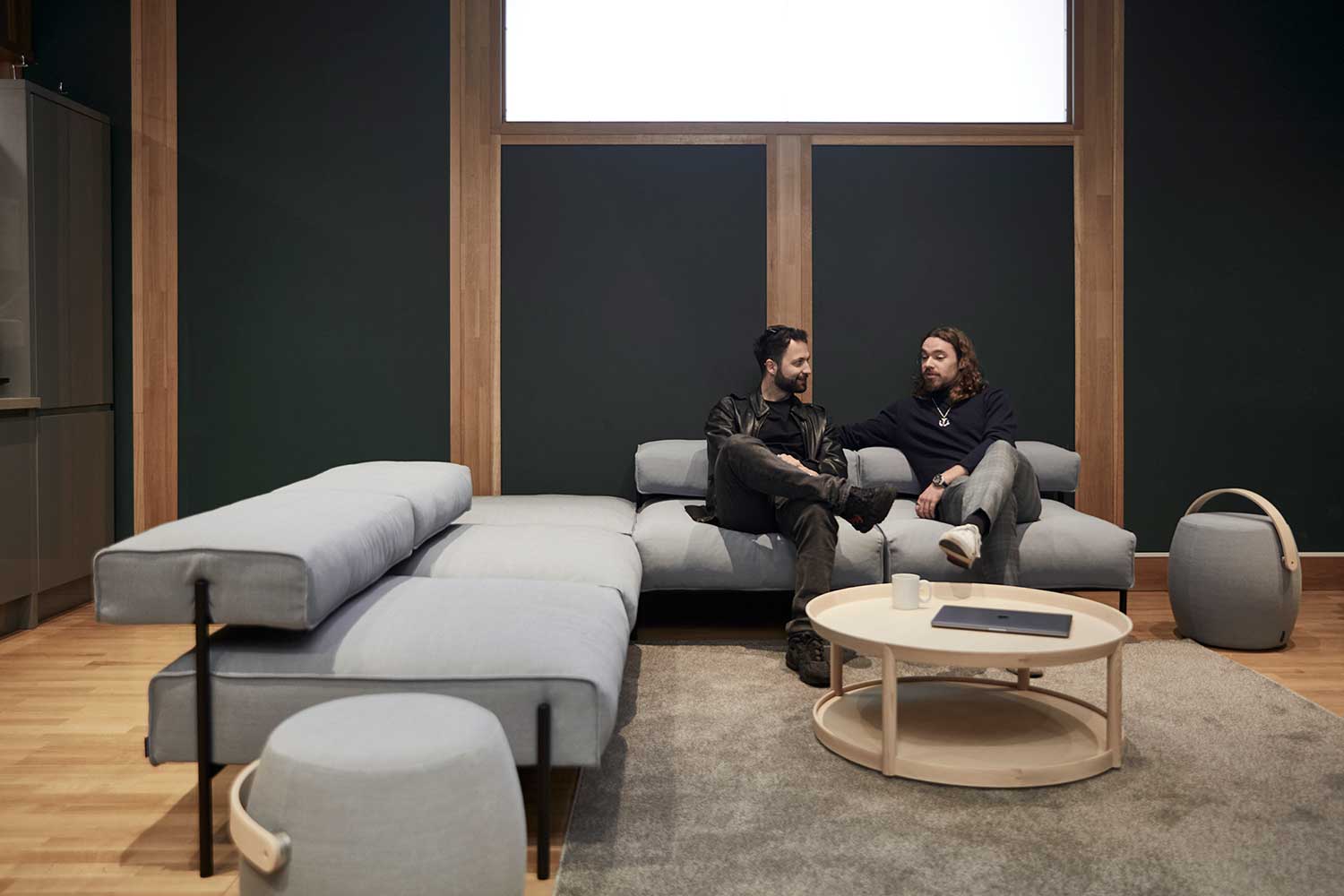
Soft seating, calm colours and homely touches like rugs help to create inviting spaces perfect for people to take a break, have a chat over coffee and connect.
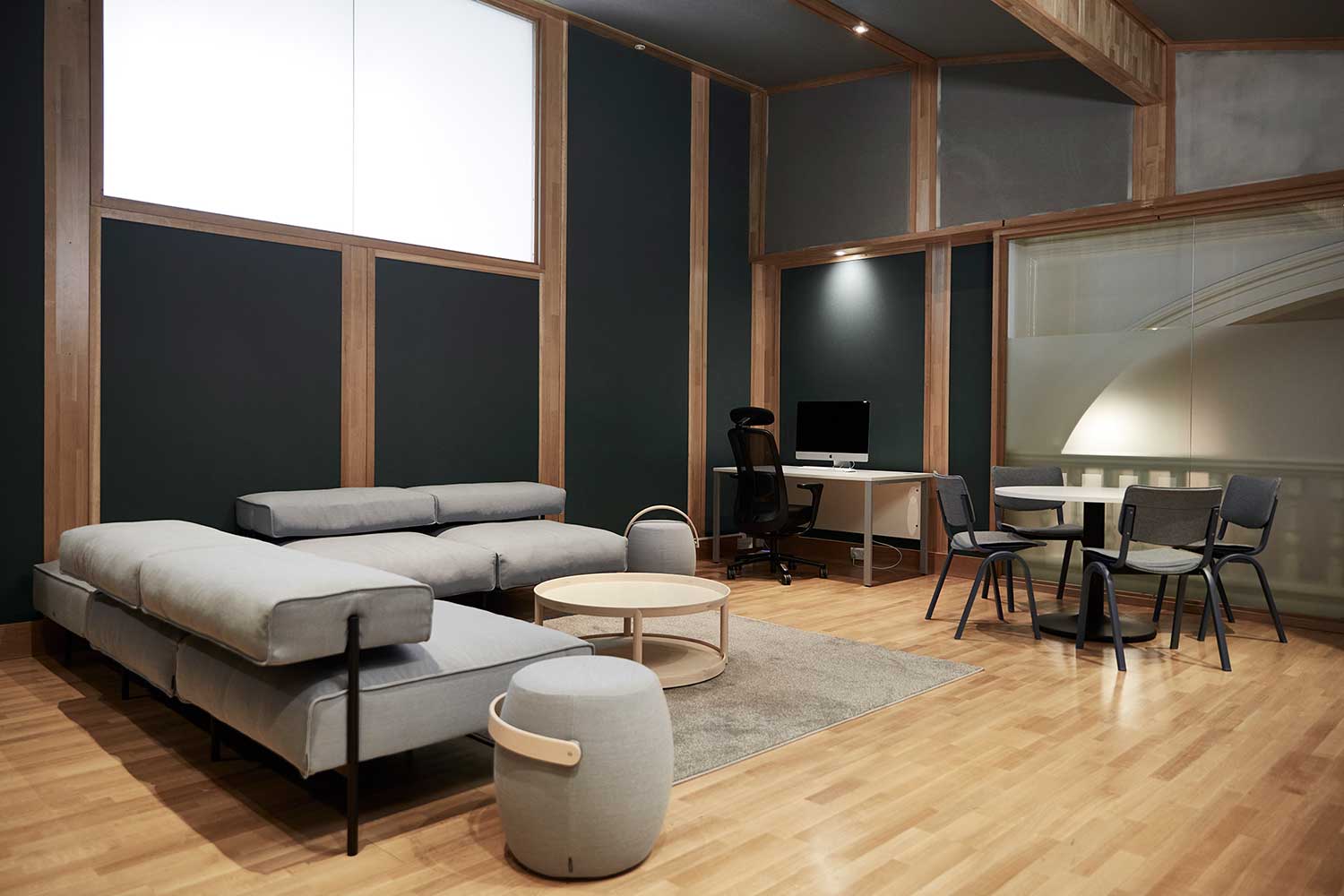
Design to bring people together
What the data points to is that people miss spending time with their work friends in the physical world. The proliferation of communication tools and platforms means that we are more digitally connected than ever, yet there is no substitute for face-to-face encounters.
What is required is a fundamental shift in the way businesses use their office workspaces. This isn’t to say environments that cater to focused and collaborative work are less important. Rather, that organisations feeling the strain when it comes to social cohesion should evaluate whether their workplace offers the right spaces that help people to connect.
Environments that cater to these interactions are often overlooked when it comes to workplace design. Sure, people sitting at their open plan workspace have ample opportunity to chat with their close work colleagues, and meeting rooms, whilst designed for work collaboration, also provide a space to get together and talk. It is important to think beyond these “work” spaces, to more social elements.
Read - Creating a hybrid workspace that makes your employees feel like they belong
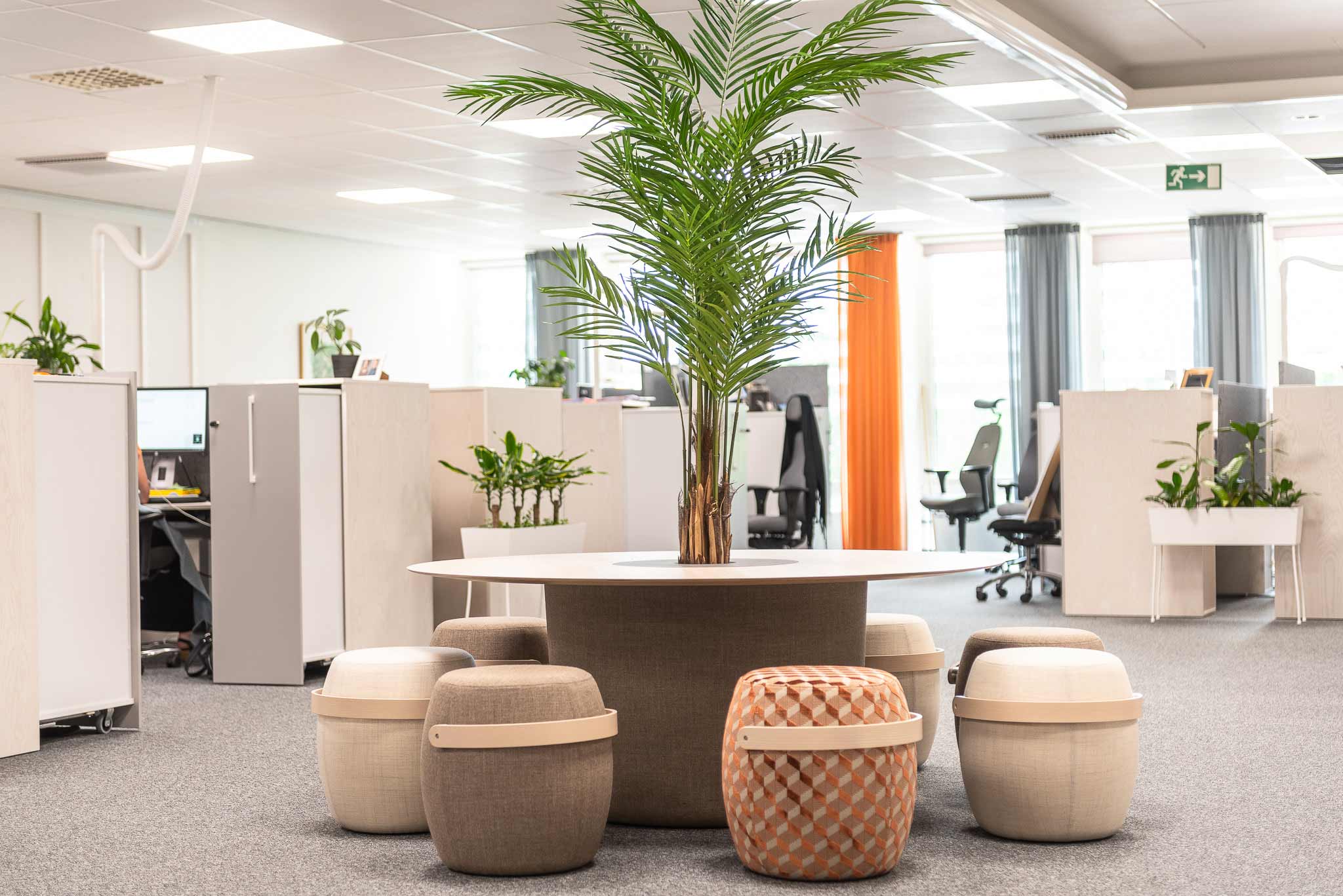
Simple touchdown spaces located centrally within an open-plan office offer a great place for quick conversation and catch-ups without standing around your desk. It can also double up as a place to receive visitors if space is tight, as well as offer a colourful feature within your office.
Location: Skandia, Stockholm | Featured products: Offecct On Point table, Offecct Carry On stools
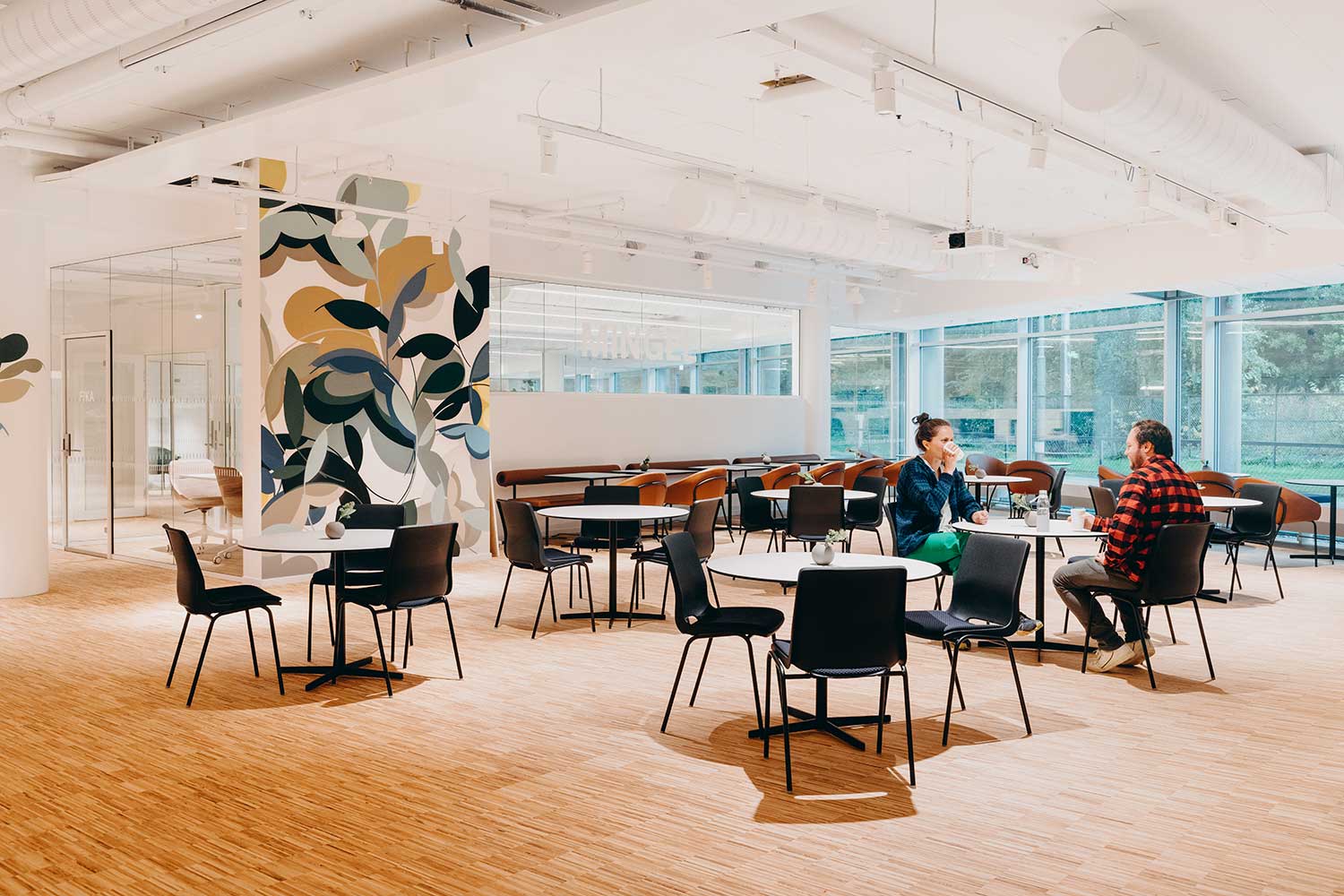
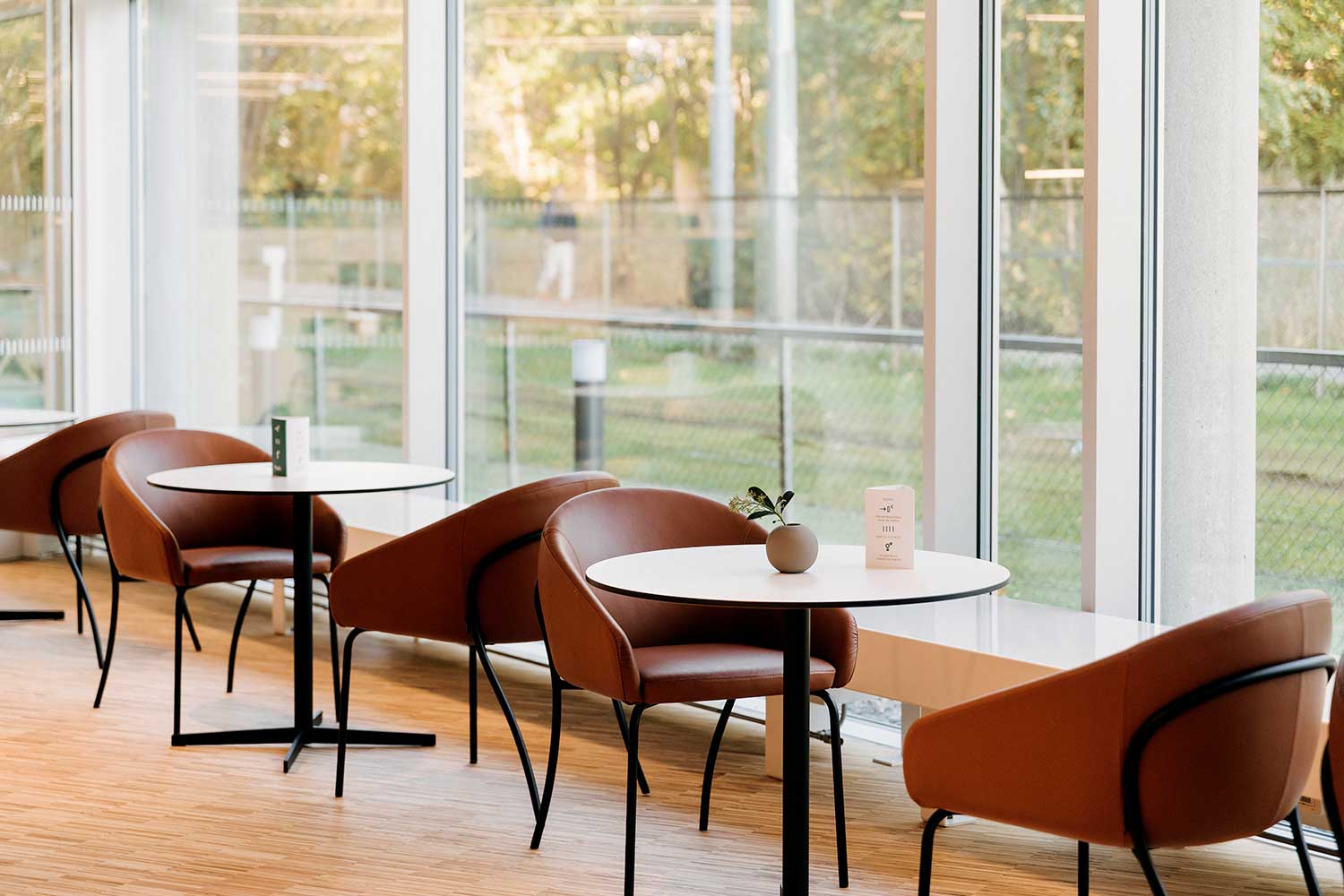
The right type of spaces
So what type of spaces can help create social cohesion? Communal dining areas are a classic choice, providing a space for everyone within a company to come together and interact without necessarily having a specific purpose to talk. Larger businesses may have room for library-like areas, touchdown zones, or booths – environments within a workspace conducive to spontaneous communication, encouraging more informal exchanges, and ultimately a chance to reconnect.
Placing these social environments in central positions makes them available to everyone, creating natural collision zones and stimulating cross-team communication whilst also acting as a natural buffer between different teams or departments, so as not to disturb those focusing on tasks.
The aim is to create a place that encourages people to not stay anchored to their desks and move around throughout the day, change postures and be more engaged with their workplace and the people there.


Creating the optimal atmosphere
Mapping out your workspace zones is only half the picture though. People want an inspiring place to work. Visually pleasing design, intuitively placed furniture, fittings, and equipment, and an overall aesthetic appearance that imbues the company culture of an organisation. If your workplace inspires, people will want to come in to work there. This isn’t a new philosophy – the tech offices of brands like Apple and Microsoft have been doing this for decades now, with increasingly attractive amenities on offer, but it’s not just extravagant amenities, more and more it’s about feeling at home.
A great example of this homely aesthetic is the resimercial trend, which has really kicked off recently. A combination of “residential” and “commercial,” resimercial design adopts certain aspects of the home into contemporary workspaces. Regular features of resimercial design include comfortable seating, soft ambient lighting, home-inspired accessories like rugs and lamps, and textures that feel warm and familiar.
This type of workspace design also goes hand in hand with the need for more flexible workspaces. These environments serve multiple purposes and can be utilised as both relaxation zones as well as for light collaboration and communication, providing employers with the opportunity to make the most of the space they have available.
Designing better workplaces
Now more than ever, businesses and organisations are evaluating the way their employees want to work, with a more distributed model being adopted on a wider scale, with people working in more and more places outside of the traditional office.
The vision of Flokk is to inspire great work. Through a portfolio of carefully crafted brands, we offer a large range of products and knowledge for designing both work and public spaces.
This might also interest you
Improving ergonomics at work: practical guidance for companies
Ergonomist Rebecka Ullholm shares what most companies get wrong about...
How the Axia chair was designed: The science and Dutch innovation behind an ergonomic classic
Discover the origins of the Axia chair, developed by BMA Ergonomics in the...
What are biomechanics and why do they matter in office seating?
The term biomechanics often gets thrown around in workplace design, but...